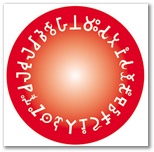| | | | | 农历正月初一 | 弥勒菩萨圣诞 | 供诸天、普佛 | | 农历正月初七 | 人日 | 普佛 | | 农历正月十五 | 元宵节 | 普佛 | | 农历正月廿六 | 观音开库 | 普佛 | | 农历二月初八 | 释迦牟尼佛出家 | 千佛宝忏一昶日 | | 农历二月十三至十九 | 观世音菩萨圣诞 | 佛七仪规 | | 公历3月30至4月5日 | 清明节 | 梁皇忏七昶日 | | 农历四月初八 | 释迦牟尼佛圣诞 | 浴佛、千佛宝忏 | | 农历六月十七至十九 | 观世音菩萨成道 | 大悲忏三昶日 | | 农历七月初九至十五 | 盂兰节 | 梁皇忏七昶日 | | 农历七月三十(或廿九) | 地藏菩萨圣诞 | 地藏忏一昶日 | | 农历九月初九 | 重阳节 | 水忏一昶日 | | 农历九月十七至十九 | 观世音菩萨出家 | 大悲忏三昶日 | | 农历九月三十(或廿九) | 药师佛圣诞 | 药师忏一昶日 | | 农历十一月十一至十七 | 阿弥陀佛圣诞 | 佛七仪规 | | 农历十二月初八 | 释迦牟尼佛成道 | 千佛宝忏一昶日 | | 农历十二月廿四 | 年底还愿 | 供诸天 | | | | | 备注: | 以上法会延生小位合家40元(限写一名代表)
个人20元 | | 往生小位50元可写两名先人,加一名20元历代祖先按一名计算 | | 大牌位一律300元
|
大佛寺位于广州市惠福东路,与北京路商业步行区交界处,香客络绎不绝,固定修行者众。大佛寺始建于南汉时期(公元917—971年),初名为新藏寺,元朝(公元1271—1368年)易名为福田庵,明代(公元1368—1644年)扩建为龙藏寺, 当时寺院范围,东起今北京路,西至龙藏街(龙藏街由此得名),南接惠福路,北达西湖路。明末,寺址被改为巡按御使公署。清兵入粤,公署毁于战火,寺址沦为废墟。康熙二年(公元1663年),平南王尚可喜鉴于攻克广州死难者众,为安抚民心,乃自捐王俸,在龙藏寺旧址重建佛寺,建成后大雄宝殿高18米,建筑面积达1277平方米,大雄宝殿正中供奉三尊以黄铜精铸高各6米、重各10吨的大佛像,时人称“人过大佛寺,寺佛大过人”,当时佛寺之大,大佛之大,堪称“岭南之冠”,大佛寺之名也由此而得。大殿用的巨型楠木柱为安南(今越南)王所捐赠,经近350年仍完整无损;其建筑艺术仿京师官庙兼具岭南风格。2009年省政府授予大佛寺大殿“省级文物保护单位”称号,大佛寺在海内外影响不断提高。在经历民国初年为支持北伐大佛寺寺产被充公拍卖及“文革”期间的劫难,改革开放后,1986年广州市委、市政府批准开放大佛寺,僧人重新入住,当时市佛协副会长广明法师被委派为开放后首任住持,进行了前期寺院修复工程。1996年,耀智法师继任住持至今,带领大佛寺僧众努力建设庄严道场:一是在白云山岭征回原祖地,恢复重建祖师塔园。二是成立大佛寺念佛堂,目前登记共修信徒3700余人,分班每天轮流共修。三是创办大佛寺图书馆和素食餐厅。图书馆目前馆藏图书22000种19万册,自2009年9月成立至今接待读者逾350万人次。图书馆馆刊《如是雨林》自2008年9月创刊以来,每两月出版一期,目前发行量近10万份。素食餐厅命名为大佛寺素食阁,2008年2月开放,至今已接待来访宾客、法师及信众逾10000人次,大家对我寺素食与服务加以好评,充分发挥了素食阁弘扬素食文化、慈悲护生理念的作用。四是扩建大佛寺,重新征回占用大佛寺历史用地的民居,自2005年4月份开始实施征地拆迁补偿工作以来,征地红线内总拆迁建筑面积23535m2,计划于2010年完成拆迁工作,并进行大佛寺复建工程,建成后将恢复寺院的基本格局,建设费用逾3亿元,其中迎亚运建设项目“佛教文化中心大楼”拟在亚运会开幕前完成基础建设,以接待来访宾客。 大佛寺地址:中国广州市惠福东路惠新中街21号,邮编:510030; 联系电话:办公室020-83393455,客堂020-83335678,图书馆020-83397916,素食阁020-83302126,《如是雨林》杂志社020-83177237;大佛寺网址:www.dafosi.org Grand Buddha Monastery Located at Dong Huifu Road in Guangzhou, next to Beijing Commercial Pedestrian Road, the Grand Buddha Monastery attracts numerous visitors and practitioners. The history of the monastery can be traced back to the Southern Han Period (A.D. 917 – 971), when it was known as Xinzang Monastery. During the Yuan Dynasty (A.D. 1271 – 1368), it was renamed Futian Monastery, while during the Ming Dynasty (A.D. 1368 – 1644), it was known as Longzang Monastery. This was how the current Longzang Street, which is to the west of the monastery, got its name. To the east is Beijing Road, while the south is connected to Huifu Road and the north leads to Xihu Road. Towards the end of the Ming Dynasty, the site of the monastery was converted to the Office of Xun An Yu Shi (巡按御使公署). When the Qing soldiers invaded Guangdong, the monastery was ravaged by fire and fell into ruins. During the 2nd year of Emperor Kangxi’s reign (A.D. 1663), Shang Kexi—the Duke of Pingnan contributed funds from his own coffers to rebuild and restore Longzang Monastery in order to honor the large numbers of war victims and to pacify the public. Upon completion, the height of the Main Shrine Hall was 18 meters and covers a floor area of 1277 square meters. Three Buddha statues made of yellow copper, each 6 meters tall and 10 tons in weight, are enshrined in the center of this hall. Two verses describe the statues’ grandeur (which is a play on the Chinese words “Da” (grand) and “Guo” (pass through or than)): “People pass through the Grand Buddha Monastery; its Buddha statues are grander than life.” Due to the size of the monastery and its Buddha statues in Lingnan area at that time; it was known as the “Crown of Lingnan”, from which the name “Grand Buddha Monastery” was derived. The pillars in the hall were made of giant trees from the Lauraceae family (of which consists cinnamon, avocado etc), that were contributed by the King of Annan (modern Vietnam), and have been well preserved for nearly 350 years. The architectural style of the Monastery is a combination of those found in official temples of Beijing and the Lingnan area. In 2009, the Main Shrine Hall of The Grand Buddha Monastery was bestowed the title of “Heritage Site of Guangdong Province” by the provincial administration, thereby raising the profile of the monastery in China and abroad. During the early years of the Republic of China, the monastery and its properties were confiscated and auctioned off by the government to raise funds to support the Northern Expedition. The monastery suffered once again during the Cultural Revolution. After China’s reform and liberalization in 1986, the Grand Buddha Monastery gained permission from the Municipal Party Committee and the Municipal Government of Guangzhou to reopen and to re-admit monks. Ven. Guangming, vice president of the Municipal Buddhist Association, was appointed as the first abbot after the reopening and was responsible for preliminary restoration works. In 1996, when Ven. Yao Zhi succeeded the abbotship, till the present, he has led the monastery monks in an attempt to create a dignified environment conducive to practice. Through his efforts thus far, he has achieved the following. 1. The old burial ground for past masters and patriarchs in Baiyun Mountain has been reinstated and restored. 2. The establishment of a Chanting Hall in the monastery, which now has over 3700 registered practitioners. They are divided into groups to carry out group practice for different sessions daily. 3. The monastery has been expanded to include both a public library and a vegetarian restaurant. The library, opened since September 2009, has a collection of about 190,000 copies of books of 22,000 different categories. It has received more than 3.5 millions readers to date. In addition, ever since the first publication of its bi-monthly journal, “Ru Shi Yu Lin” in September 2008, it has achieved a circulation of 100,000 copies.
The monastery’s vegetarian restaurant, named “Grand Buddha Monastery Vegetarian Pavilion” has attracted more than 10,000 diners, including Venerables, since it opened in February 2008. It has played an important part in promoting vegetarianism, which is in line with the teachings of compassion and protecting lives. It has also garnered praise for its excellent vegetarian food quality and outstanding service. 4. Starting from April 2005, a major expansion of the monastery began with en bloc reclamation of its own lands that were being used for residential purposes. The relocation and compensation of the residents is expected to be completed in 2010, covering a total area of 23,535 square meters. The total cost for restoration and expansion works to restore the basic structure of the monastery is expected to exceed 300 million yuan. This project also includes laying the groundwork for the construction of the Centre of Buddhist Culture. Upon completion, the building will receive visitors for the coming Asian Games. Address: No.21, Hui Xin Central Street, Dong Hui Fu Road, Guangzhou, China. Postal Code: 510030 Contact Office: 020-83393455, Reception Hall: 020-83335678 Library: 020-83397916, Journal of the Library: 020-83177237 Vegetarian Restaurant: 020-83302126, | 